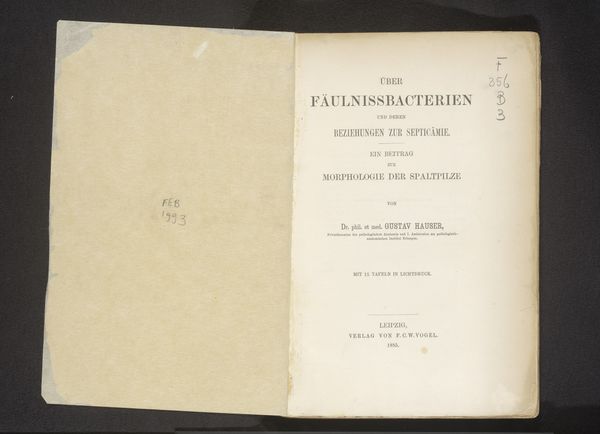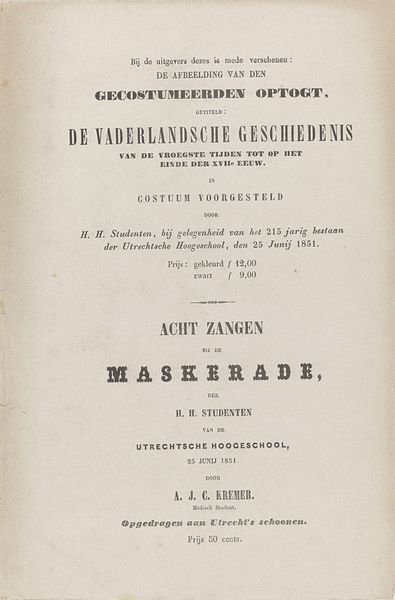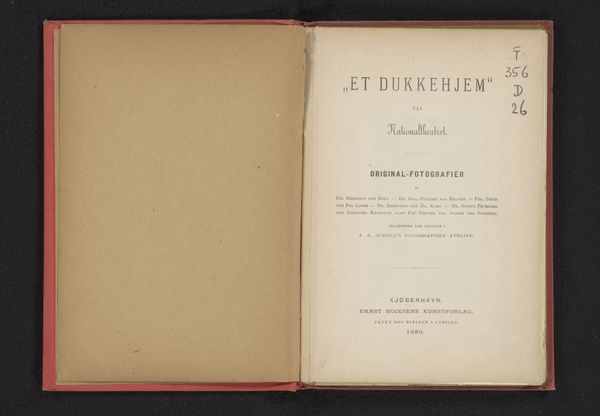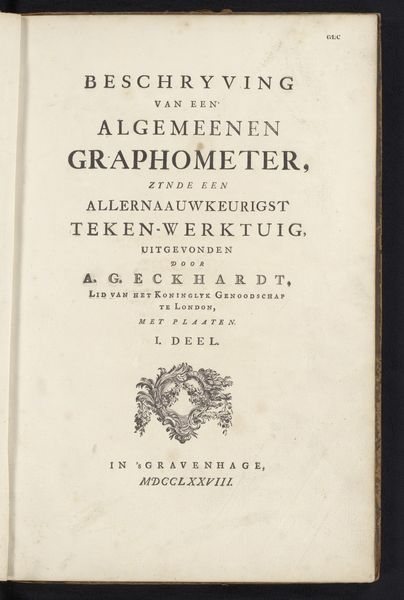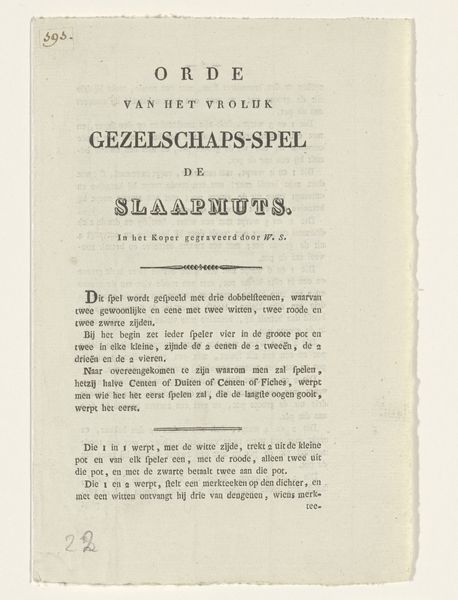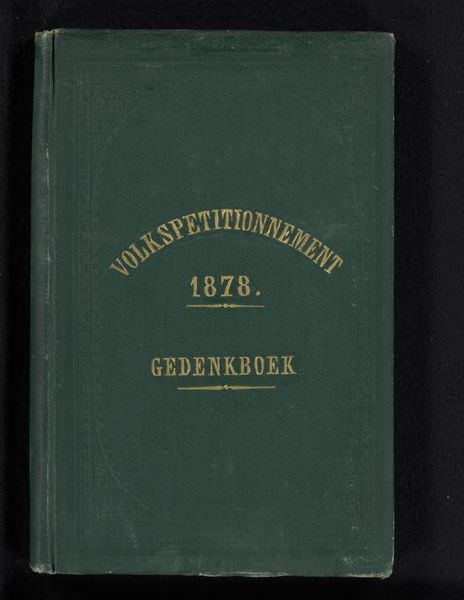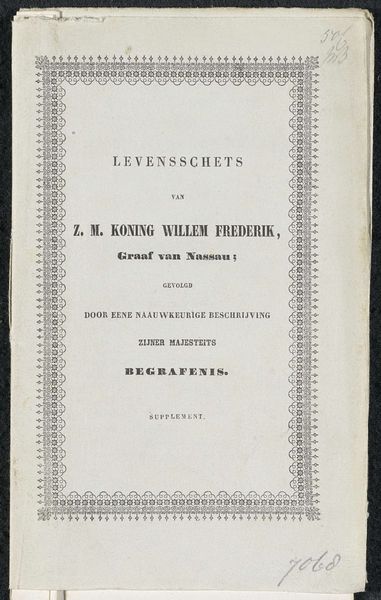
print, textile, paper, typography
# print
#
textile
#
paper
#
typography
Dimensions: height 23.5 cm, width 14.7 cm
Copyright: Rijks Museum: Open Domain
Editor: So, this print is titled "Dat niemand uwe kroon neme," made in 1853 by C.L. Brinkman. It seems to be a public announcement or a call to action, but the tone feels quite severe. What symbolic meanings can we draw from the textual imagery on this historical piece? Curator: Indeed. "Let no one take your crown"—it's powerful! A crown inherently symbolizes authority, achievement, perhaps even a divine right. The text argues about "Establishing the Episcopal Hierarchy," appealing to “Brothers in Faith” and evokes notions of loss, or potential theft. Why would someone in 1853 feel their "crown" was at risk? Editor: That’s a good question. Was the establishment of this hierarchy a controversial event at the time? Curator: Precisely. It marks a moment of shifting religious power in the Netherlands. Consider that the symbolism inherent to crowns relates to political sovereignty as well. Now, does that resonate in modern cultural and political contexts? Editor: I think so. Religious and political symbolism often intersect, especially when it comes to ideas about national identity and what’s worth protecting. So, it's not just about a literal crown, it's about the power and principles it represents, correct? Curator: Exactly. Think about it – this image likely resonated deeply because people understood the unspoken associations of a crown. The announcement serves not as news, but an assertion of resistance or resilience. We carry collective memory and project them onto symbols, like crowns or hierarchies. How does recognizing the underlying meaning of symbols alter our reading? Editor: It reveals layers of context. Instead of a straightforward announcement, it hints at complex tensions of history and faith that echo into present discussions of religious freedom and identity. Thank you!
Comments
No comments
Be the first to comment and join the conversation on the ultimate creative platform.
